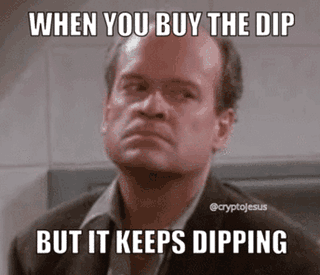All Out July 21st
Big Tech’s Dominance in Stock Market Hits Breaking Point for Nasdaq 100
Most broad stock indices are market cap weighted (well in reality they’re float adjusted market cap weighted but close enough). What this means is that as some companies get larger relative to others, their weight in the index goes up. If there is a situation in which a few companies outperform then the aggregate weight of those few companies will comprise a large part of the index. There are certain diversification rules regarding how much weight funds can place on certain companies. Basically funds cannot have more than 50% of the fund invested in companies which each individually account for more than 5% of the fund. The large concentration in the top 6 companies in the Nasdaq might spell trouble for these funds. Therefore the Nasdaq is having a special rebalancing of the index, the third of its kind, to cap the weight of these 6 large stocks (last 2 times were in 1998 and 2011).
What’s pretty amazing is the tremendous performance these stocks have had that they’ve essentially taken over the index. The top 3 stocks account for more than 30% and the top 10 account for nearly 59%. As crazy as this seems, it’s been worse before. The first special rebalance took place in 1998 when Microsoft and Intel made up about 50% of the index, the rules were subsequently changed to avoid this issue going forward. In 2011 it was rebalanced because Apple was close to 20% of the index.
An interesting point here is that many investors believe that just because something is a “passive” index (what the broad investing public understands by passive investing is far from the actual definition, but that’s a topic for another day), means that it is set in stone and cannot change. Most investors we’ve spoken to believe that indexes follow rules and that’s it; they’re not aware the rules can and do change. For example, the S&P 500 changed its methodology from being purely market cap weighted (larger companies have a larger weight), to a float-adjusted market cap weighting. This means that shares with a lot of restricted stock will get lower weight, even if the market cap is very large. This was done because during the dot-com boom there were large companies which had relatively little free float (how much stock the public can actually buy), therefore it became difficult for funds to track the index since the # of shares available to purchase was small relative to their market cap. Another interesting fact which not everybody knows is that the S&P 500 actually has a committee that decides which stocks go in and out of the index. So the most widely tracked index in the world is actually made up of a bunch of stock pickers!

Selling to yourself: the private equity groups that buy companies they own
Some more private equity bashing today, as you’ve probably noticed we’re not fans of PE. The way a PE fund usually works is that they create a fund and raise money for a period of 10-12 years. They will slowly ask for your money to invest and will return it once they exit the companies they bought. At the end of the life of the fund they do have to liquidate any remaining investments to pay the investors back. The problem with this is that by sheer bad luck, the end of the fund may coincide with a bad time to sell the companies. For example, funds that ended in 2008 and 2009 and had to go out and sell their companies probably forewent a lot of gains.
The latest trend in PE is for fund managers to buy companies from themselves. They have Company A in Fund 1 and they believe it’s not a great time to sell, so they raise Fund 2 and buy company A for Fund 2 from Fund 1. This in theory sounds nice, give your existing investors liquidity and for your new investors (which might be the same ones) you’re buying a company that you already know pretty well. However, these transactions are mired with conflicts of interest. Fund 1 shareholders want to sell the company for as much as possible. Fund 2 shareholders want to buy the company for as little as possible. The fund manager has a stake in both funds, so do they try to get the best price for Fund 1 or Fund 2.
Let’s look at the incentives. Fund managers make their money in 2 ways, management fees and performance fees. The first is charged usually on committed capital or invested capital (depending on when in its lifecycle the fund is). The second is charged when investments are exited and actual cash hits the funds. So in these fund to fund transactions managers will earn a performance fee (from Fund 1) and set the baseline for the management fee for Fund 2. Looking at it from this lens the incentive is to get Fund 1 the best deal possible. By doing this they will earn a hefty performance fee, lock in a better track record for their existing fund (which they can then use to raise new funds), and have a larger capital base on which to charge performance fees. We’re sure fund managers will try to execute the transaction at a fair price, but you can never dismiss incentives as they are extremely powerful, especially when it comes to money.

Senators to Propose Ban on U.S. Lawmakers, Executive Branch Members Owning Stock
We don’t know why this isn’t a thing yet. How can it be that lawmakers can hold individual stocks? After all lawmakers are privy to a lot of private and confidential data on many different companies. They might be aware of company specific news before the general public. And they are definitely aware of government projects, laws, etc. that will impact individual companies before the general public. The shocking thing is that they oftentimes trade on this information and get away with it (in fact there’s even a joke that Nancy Pelosi is a great hedge fund manager, and there are ETFs that track their picks). Even if lawmakers weren’t allowed to trade on information they received, they could still nudge their decisions and projects in ways that would help their existing holdings. There have been several cases of very suspicious transactions which were “investigated” but nothing came from them (here and here). How weird, politicians looking out for themselves…

BlackRock names Saudi Aramco CEO Amin Nasser to board
BlackRock Is the worlds largest asset manager with roughly $10 trillion under management. A couple of years ago their CEO, Larry Fink, shifted the company to be more “ESG”. They offer all sorts of funds, ESG and non-ESG funds. However, Larry has sent letters to CEOs concerning ESG topics and has been very vocal in the area. They recently appointed Saudi Aramco’s CEO to their board. We’ve seen many ESG die hard criticize this as being wrong, since it’s the CEO of the world’s largest oil company. We think it’s a welcoming development. The issue with ESG is that demonizing companies and trying to run them out of business if they don’t change (what divesting from them supposedly tries to accomplish) is the wrong approach. We wrote recently about a study that found that the best way to help reduce emissions wasn’t divesting from polluting companies, but rather working with them to reduce their pollution. This makes a lot of sense. Why give money to green companies which are already green. We should be investing in brown companies to make them greener. Anyways, it’s an interesting development since a strategy of engagement and not demonizing will probably be our best best if we want to tackle ESG issues.





